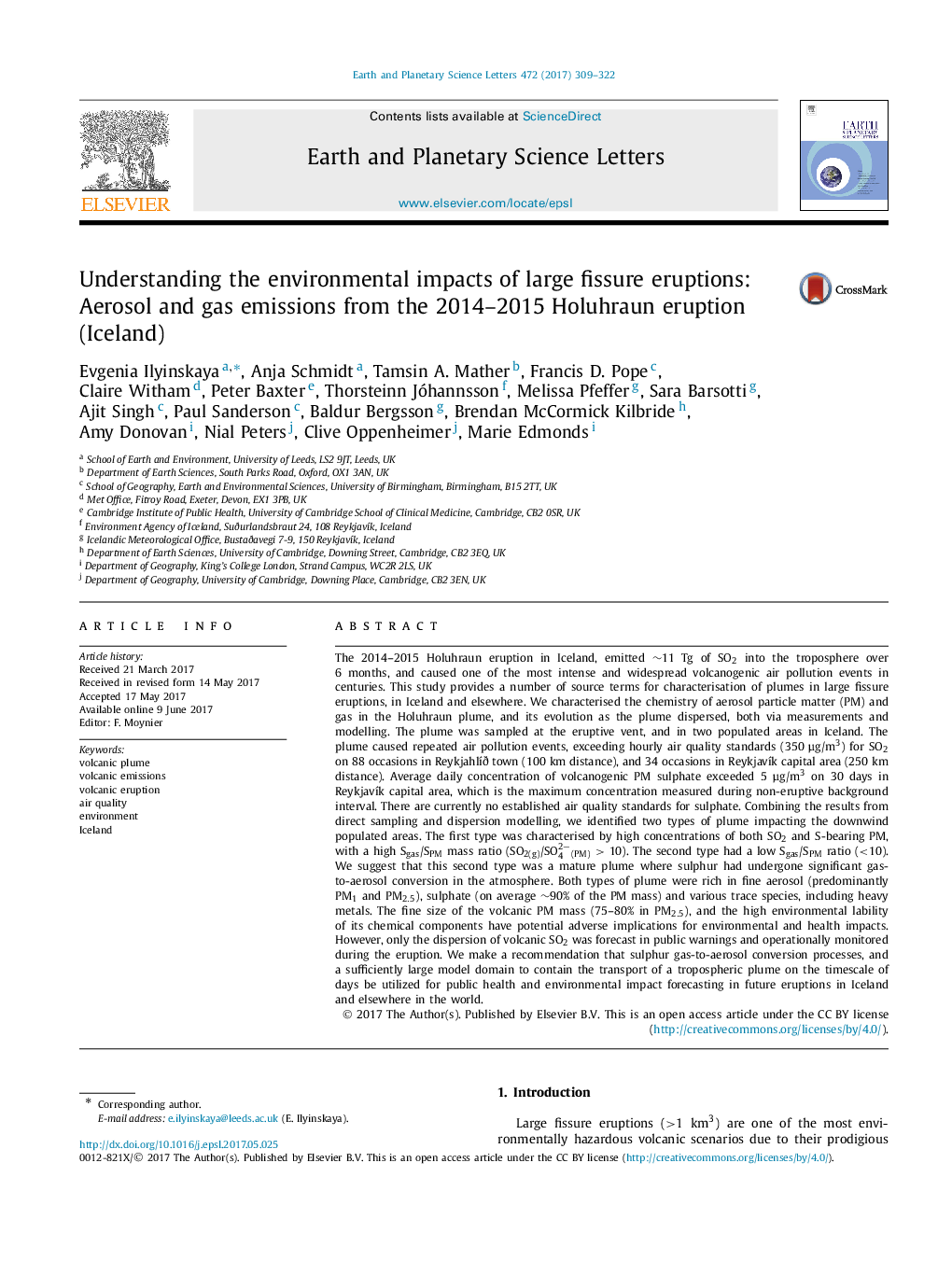| کد مقاله | کد نشریه | سال انتشار | مقاله انگلیسی | نسخه تمام متن |
|---|---|---|---|---|
| 5779521 | 1634684 | 2017 | 14 صفحه PDF | دانلود رایگان |
عنوان انگلیسی مقاله ISI
Understanding the environmental impacts of large fissure eruptions: Aerosol and gas emissions from the 2014-2015 Holuhraun eruption (Iceland)
دانلود مقاله + سفارش ترجمه
دانلود مقاله ISI انگلیسی
رایگان برای ایرانیان
کلمات کلیدی
موضوعات مرتبط
مهندسی و علوم پایه
علوم زمین و سیارات
علوم زمین و سیاره ای (عمومی)
پیش نمایش صفحه اول مقاله

چکیده انگلیسی
The 2014-2015 Holuhraun eruption in Iceland, emitted â¼11 Tg of SO2 into the troposphere over 6 months, and caused one of the most intense and widespread volcanogenic air pollution events in centuries. This study provides a number of source terms for characterisation of plumes in large fissure eruptions, in Iceland and elsewhere. We characterised the chemistry of aerosol particle matter (PM) and gas in the Holuhraun plume, and its evolution as the plume dispersed, both via measurements and modelling. The plume was sampled at the eruptive vent, and in two populated areas in Iceland. The plume caused repeated air pollution events, exceeding hourly air quality standards (350 μg/m3) for SO2 on 88 occasions in ReykjahlÃð town (100 km distance), and 34 occasions in ReykjavÃk capital area (250 km distance). Average daily concentration of volcanogenic PM sulphate exceeded 5 μg/m3 on 30 days in ReykjavÃk capital area, which is the maximum concentration measured during non-eruptive background interval. There are currently no established air quality standards for sulphate. Combining the results from direct sampling and dispersion modelling, we identified two types of plume impacting the downwind populated areas. The first type was characterised by high concentrations of both SO2 and S-bearing PM, with a high Sgas/SPM mass ratio (SO2(g)/SO42â(PM) > 10). The second type had a low Sgas/SPM ratio (<10). We suggest that this second type was a mature plume where sulphur had undergone significant gas-to-aerosol conversion in the atmosphere. Both types of plume were rich in fine aerosol (predominantly PM1 and PM2.5), sulphate (on average â¼90% of the PM mass) and various trace species, including heavy metals. The fine size of the volcanic PM mass (75-80% in PM2.5), and the high environmental lability of its chemical components have potential adverse implications for environmental and health impacts. However, only the dispersion of volcanic SO2 was forecast in public warnings and operationally monitored during the eruption. We make a recommendation that sulphur gas-to-aerosol conversion processes, and a sufficiently large model domain to contain the transport of a tropospheric plume on the timescale of days be utilized for public health and environmental impact forecasting in future eruptions in Iceland and elsewhere in the world.
ناشر
Database: Elsevier - ScienceDirect (ساینس دایرکت)
Journal: Earth and Planetary Science Letters - Volume 472, 15 August 2017, Pages 309-322
Journal: Earth and Planetary Science Letters - Volume 472, 15 August 2017, Pages 309-322
نویسندگان
Evgenia Ilyinskaya, Anja Schmidt, Tamsin A. Mather, Francis D. Pope, Claire Witham, Peter Baxter, Thorsteinn Jóhannsson, Melissa Pfeffer, Sara Barsotti, Ajit Singh, Paul Sanderson, Baldur Bergsson, Brendan McCormick Kilbride, Amy Donovan, Nial Peters,